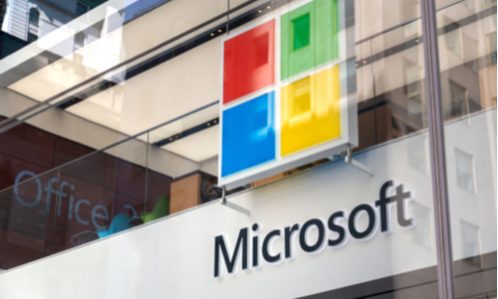
By Benedict Evans
When Steve Wozniak created the original Apple I in 1975, IBM dominated the computing industry. It was nicknamed ‘Big Blue’, it was so far ahead of its competitors that people talked about ‘IBM and the seven dwarves’, and it had just come through yet another anti-trust case. IBM’s dominance, of course, was based on the mainframe, which was the central paradigm of the computing industry, and it had sealed its dominance just a decade earlier with the launch of the 360 system. However, over the next decade it became obvious that the flood of PCs that followed the Apple 1 were going to overtake the mainframe. All of the focus of innovation, investment and company creation moved to the PC. Indeed, PCs created the very idea that software could be a separate industry, and not just something that was bundled with your hardware. Microsoft, not IBM, dominated the PC ecosystem, and so Microsoft became the centre of the tech industry – it became the new sun in the solar system.
The funny thing is, though, that mainframes didn’t go away. IBM went through a near-death experience in the 1990s, but mainframes carried on being used for mainframe things and IBM remained a big tech company. In fact, IBM’s mainframe installed base (measured in MIPS) has grown to be over ten times larger since 2000. Most people working in Silicon Valley today weren’t even born when mainframes were the centre of the tech industry, but they’re still there, inside the same big companies, doing the same big company things. (This isn’t just about IBM either – the UK’s sales tax system runs on DEC’s VAX. Old tech has a long half-life). Mainframes carried on being a good business a long time after IBM stopped being ‘Big Blue’.
Much the same thing then happened to Microsoft. 20 years after the Apple 1, Microsoft launched Windows 95, which sealed its dominance of the PC industry, but Netscape had launched a year earlier, and Netscape and the web ended Microsoft’s dominance just as the PC had ended IBM’s dominance – the focus of innovation, investment and company creation moved elsewhere. Instead of creating software and companies around Windows APIs, the industry moved to creating software and companies around the internet and, especially, around the web. Microsoft never had dominance in the web, though it tried, just as IBM never had dominance in PCs, though it tried. And so in the 1970s, people worried about what IBM might do, and in the 1990s people worried about with Microsoft might do, but today, very few people in tech worry about what Microsoft might do – they worry about Google or Apple or Facebook or Amazon. Microsoft (or even IBM) might be a competitor, but they no longer have that dominance. Indeed, if you talk to senior Microsoft execs about this, they will say that for 20 years everything in tech was a PC accessory, but now the PC is just a smartphone accessory.
Featured News
Dutch Regulator Fines Uber €10 Million for Privacy Violations
Jan 31, 2024 by
CPI
DOJ Investigates AI Competition, Eyes Microsoft’s OpenAI Deal: Bloomberg
Jan 31, 2024 by
CPI
Japanese Regulator Approves Korean Air’s Merger with Asiana Airlines
Jan 31, 2024 by
CPI
Netgear Files Antitrust Lawsuit Against Huawei Alleging Patent Misuse
Jan 31, 2024 by
CPI
Tennessee and Virginia Attorneys General Challenge NCAA’s NIL Rules in Federal Lawsuit
Jan 31, 2024 by
CPI
Antitrust Mix by CPI
Antitrust Chronicle® – The Rule(s) of Reason
Jan 29, 2024 by
CPI
Evolving the Rule of Reason for Legacy Business Conduct
Jan 29, 2024 by
CPI
The Object Identity
Jan 29, 2024 by
CPI
In Praise of Rules-Based Antitrust
Jan 29, 2024 by
CPI
The Future of State AG Antitrust Enforcement and Federal-State Cooperation
Jan 29, 2024 by
CPI